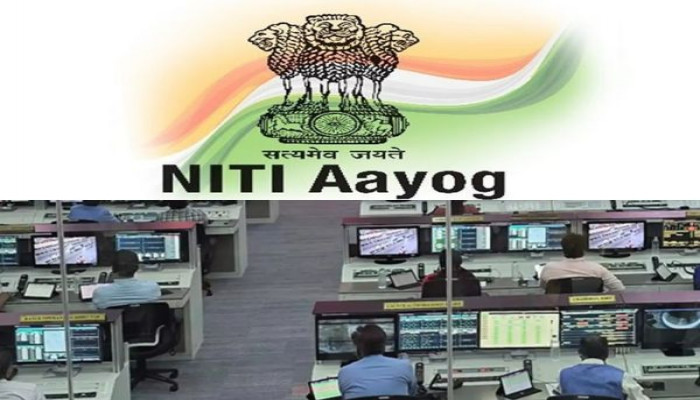‘India’s services-based transformation becoming more inclusive, regionally balanced’: NITI Aayog reports
- In Reports
- 07:25 PM, Oct 28, 2025
- Myind Staff
B V R Subrahmanyam, CEO of NITI Aayog, released two reports under the Services Thematic Series in the presence of Arvind Virmani, Member of NITI Aayog, and V Anantha Nageswaran, Chief Economic Adviser to the Government of India. Senior officials from the Central and State Governments, industry association representatives, and members of academia were also present. These reports are among the first detailed studies of India’s services sector, analysing it in terms of both output and employment, and offering state-level insights beyond national data.
The first report titled “India’s Services Sector: Insights from GVA Trends and State-Level Dynamics” explores how services-led growth is evolving across regions and whether states with smaller service sectors are catching up with those that are more advanced, a key sign of balanced regional progress.
The services sector has become the backbone of India’s economy, contributing nearly 55 per cent of national GVA in 2024 to 2025. The report notes that services-led growth is becoming more evenly spread across the country. Although interstate gaps have slightly widened, states that were once behind are starting to catch up. This shows that India’s services-based transformation is becoming more inclusive and regionally balanced.
At the national level, the report suggests prioritising digital infrastructure, logistics, innovation, finance, and skilling to enhance competitiveness and diversification. At the state level, it recommends designing service strategies based on local strengths, improving institutional capacity, linking services with industrial ecosystems, and building stronger urban and regional service clusters.
The second report, titled “India’s Services Sector: Insights from Employment Trends and State-Level Dynamics”, looks at employment patterns in the services sector. It provides a clear picture of India’s workforce across sub-sectors, gender, regions, education, and occupations. The report shows that the services sector has two sides, one made up of modern, high-productivity areas that are globally competitive but generate fewer jobs, and another consisting of traditional sectors that employ many people but are largely informal and low-paying.
The report highlights that while the services sector continues to support India’s employment growth and post-pandemic recovery, major challenges remain. Job creation differs across sub-sectors, informality is still common, and job quality has not improved as much as output. Gender inequality, rural and urban divides, and regional gaps stress the need for a focused employment strategy that promotes formalisation, inclusion, and higher productivity.
To address these issues, the report outlines a four-part plan focused on formalisation and social protection for gig workers, self-employed individuals, and MSME employees, targeted skilling and digital access for women and rural youth, investment in emerging and green economy skills, and balanced regional growth through service hubs in Tier 2 and Tier 3 cities.
By presenting the services sector as a strong source of productive, high-quality, and inclusive jobs, the report underlines its vital role in shaping India’s employment future and achieving the vision of Viksit Bharat by 2047.
Together, these reports provide a roadmap for State Governments and industry to drive the next phase of services-led growth. They highlight the importance of expanding digital infrastructure, developing skilled talent, fostering innovation, and connecting services across value chains to position India as a trusted global leader in services.







Comments